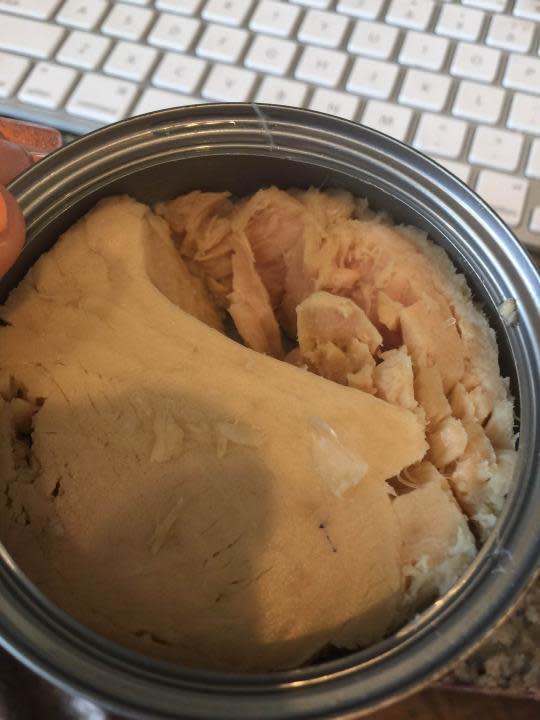Why You Shouldn’t Be Alarmed by Crystals in Your Canned Tuna

Earlier this month, New York resident Stacy Peskin was preparing her weekly salad of greens topped with tuna when she noticed something poking out from the pinkish meat: clear, sharp pieces of what looked like glass. But it wasn’t just a single shard. Poking around with a fork, Peskin found them embedded throughout the Bumble Bee can’s contents.
When Peskin emailed Bumble Bee with her problem, theseafood company had another explanation. They weren’t pieces of glass, but rather crystals chemically known as magnesium ammonium phosphate hexahydrate, often calledstruvite.
“These crystals are formed by the union of natural, normal constituents found in all seafoods after they are sterilized in the can,” Bumble Bee told Peskin in the email, which she provided to Yahoo Food. “These constituents are mineral elements, richly supplied by the sea water in which the fish or shellfish live. These crystals can easily be mistaken for glass or plastic, although they more closely resemble crystals of salt.”
Yahoo Food reached out to the Food and Drug Administration, which confirmed that Bumble Bee’s explanation could be true. “The crystals occur naturally and therefore are not viewed as a food additives,” FDA spokesperson Lauren Kotwicki told us, adding that they “easily break into pieces and dissolve during the process of digestion.”

Peskin, however, isn’t swayed by the explanation. Even if the pieces aren’t glass, she still worries that they’re dangerous. “It definitely looked like glass. It did not fall apart, and it was sharp,” she said. “It’s gross! It’s freaky! I definitely will think before buying that brand again.”
Still, Peskin wouldn’t be the first person to mistake struvite for glass. In 2011, a Seattle woman found what she thought were “tiny, sharp pieces of glass stuck inside the layers of canned tuna.” The shards turned out to be struvite. Local outlet KOMO News, which ran the story as part of itsProblem Solvers series, suggested a simple test for telling one from the other:
“Pour some vinegar in a microwave-safe bowl or measuring cup,” wrote KOMO News’s Connie Thompson. “You don’t need much, just enough to cover the shards in question. Pop the bowl in the microwave long enough to get the vinegar warm — about 30 seconds. Then place the shards in the warm vinegar. After about 10 minutes or so, you’ll see that most of the crystals are gone — dissolved in the acidic vinegar, just like they do in your stomach."


